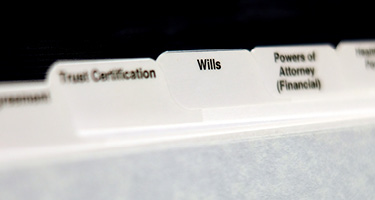It is important for business owners to know that general liability insurance does not protect their property or employees, nor does it cover business-related auto accidents. It covers only that which is outlined in the policy itself. Often, though, business owners miss the two points below, resulting in loss of coverage.
Confirmation of Coverage
Insurance policies are interpreted under the rules of construction that apply to contracts in general. The primary goal is to give effect to the parties’ intent expressed in the document. Because of this, every business should obtain a complete copy of its policy upon its issue to confirm that it indeed contains the correct, desired coverage. Over the years, I’ve regularly seen companies receive certificates of insurance but not actual policies. Certificates do not give rights to coverage, though, and show only proof of purchase. Should a claim arise and you’re told to go read your policy, you’re left without any policy to read. Waiting until your company is sued to check your policy might well be too late, as you’ll often find you don’t have the coverage you think you bought.
Insurance policies are typically issued on approved forms that attempt to standardize coverage language. Because standardized policy language is all interpreted the same way by courts, businesses generally know what they purchased. Unfortunately, policies may also contain “endorsements”—add-ons from the insurance company. Endorsements can change or even eliminate standardized language. Worse, policies may contain standard forms whose language is modified or even deleted by certain endorsements.
Despite having knowledge and opportunity, an insurer is not required to interject itself into a proceeding on its insured’s behalf."
Confused? I once had a case in which the company’s policy was meant to cover a construction subcontractor. Unfortunately, the subcontractor learned that the policy endorsement changed a term that deleted claims for construction defects. Because the lawsuit alleged damages from a construction defect but the policy included this endorsement, the claim was not covered. To add insult to injury, the agency that sold the policy went out of business before the suit was completed—so there was no company to pursue for the damages resulting from the policy endorsements.
You’ve Been Sued. Now What?
Insurance policies instruct their customers to turn in claims to the carriers for coverage. These are called “notice of suit” clauses and can be found in every policy. They are important; do not ignore them.
Lawsuits typically begin with a complaint or petition being filed by the plaintiff; the suit is then served on the defendant. It’s important to note that your business still might not be protected even with the correct language in your insurance policy. In the case of Moreno v. Sentinel Ins. Co (June 2022), the defendant received the petition but did not believe it would be covered and therefore hired a defense lawyer. As the case progress, the petition was amended, which could potentially have brought it into coverage under the policy. However, because there was no evidence that the insured communicated to the insurance company that it wanted the carrier to defend and handle the suit, the court of appeals upheld the dismissal of the subsequent coverage lawsuit. The carrier was entitled to rely on the insured’s previous decision to defend itself when no contrary decision was made known to the carrier. In short, always demand a defense and coverage—don’t make that decision for the carrier.
An additional insured party under the same Sentinel policy sent a letter to the same carrier entitled demand and tender for defense and indemnity. The carrier received the demand with the same petition and agreed to defend and indemnify the insured. Because this party demanded a defense, it received one. The court of appeals noted that “an insurer has no duty to defend or to indemnify an insured unless the insured forwards suit papers to the insurer and requests a defense in compliance with the notice-of-suit conditions.” It’s not enough that the carrier knows about the suit; the insured must notify the carrier that “a defense is expected.” In other words, despite having knowledge and opportunity, an insurer is not required to interject itself into a proceeding on its insured’s behalf. Likewise, typically the plaintiff cannot trigger a duty to defend and duty to indemnify the insured by mailing a copy of his own petition to the carrier. The carrier is entitled to look to its insured for directions.
It’s absolutely crucial to stay vigilant about your policy language and any add-ons. Be clear with what you demand of your insurance policy and your coverage expectations from the outset, because waiting until after a claim has been filed may be too late. Insurance policies are essential for business owners, but a complete understanding of what yours does and does not protect could make all the difference at the most important moment.
George Lankford was a law clerk for a Texas Court of Appeals Chief Justice Austin McCloud and U.S. District Judge David Below, Jr before going into private practice for defense law firms back in the 1980s. His practice has been focused on litigation in large and small law firms in the areas of insurance law, construction defect and personal injury defense. George orally argued and prevailed in the Texas Supreme Court on seminal insurance law decision in Northern County Mutual v. Davalos regarding when an insurance carrier can control the defense of its insured’s case.




























